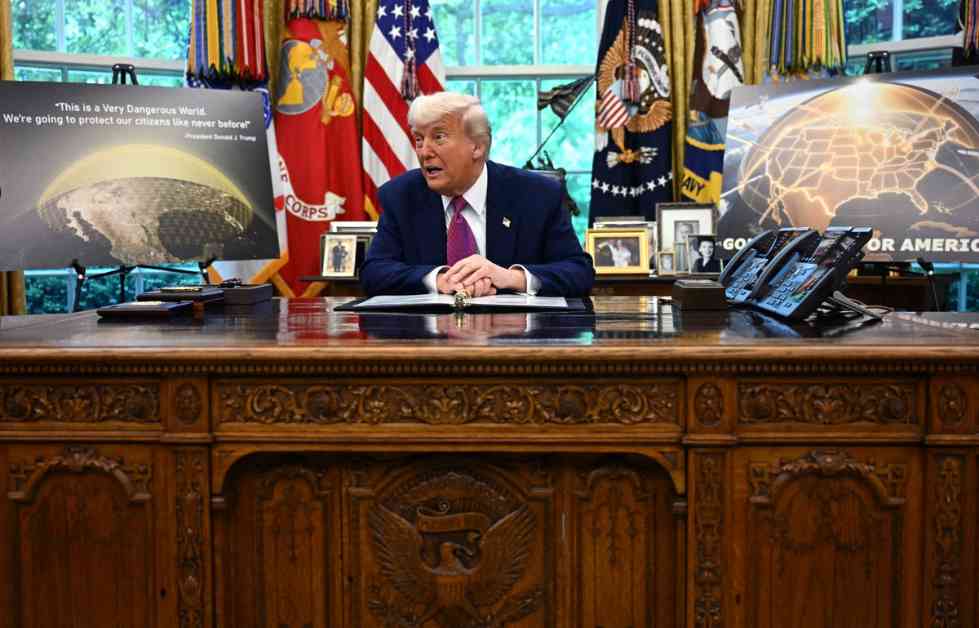President Donald Trump had a big reveal this week in the Oval Office about his administration’s latest project called “Golden Dome.” This ambitious plan is meant to protect the U.S. from missile attacks by foreign enemies. Trump, along with Secretary of Defense Pete Hegseth and Gen. Michael Guetlein of the U.S. Space Force, announced that Golden Dome would be finished in three years at a whopping cost of $175 billion. The name is inspired by Israel’s Iron Dome system, even though the U.S. is much larger geographically.
The program aims to expand into space to defend against ballistic, cruise, and hypersonic missiles. Trump compared it to the Strategic Defense Initiative (SDI) from the 1980s, also known as “Star Wars.” The goal of Golden Dome is to end the missile threat to the American homeland once and for all. Despite the lack of technical details in the briefing, Trump mentioned deploying advanced technologies across land, sea, and space, including space-based sensors and interceptors. The program has faced criticism for its potential cost, estimated by the Congressional Budget Office to reach $542 billion, and concerns about sparking a global arms race and weaponizing Earth’s orbital environment.
Experts like Jeffrey Lewis have raised doubts about the feasibility of space-based missile defense systems. The idea of using thousands of satellites for interception is not as simple as it sounds, considering factors like interceptor quality, speed, and the need for constant replacement due to orbital decay. The reliance on technology like AI may not be enough to overcome the challenges posed by adversaries’ countermeasures and the sheer physics involved in intercepting missiles in space. Despite the appealing nature of ballistic missile defense, the practicality and effectiveness of such systems remain questionable.
The relentless pursuit of space-based missile defense projects like Golden Dome reflects a desire to find a technological solution to nuclear threats. However, history has shown that such endeavors are often costly and ultimately ineffective. While the current administration may push forward with its plans, the reality of the challenges involved in implementing these systems may lead to a significant waste of resources and potential complications in the Earth’s orbital environment. As discussions around Golden Dome continue, it is essential to consider the broader implications and limitations of relying solely on technology to address complex geopolitical issues.










